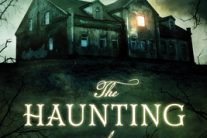I can remember, when I was young, being taught a simple dance. All of my schoolmates were taught it too. We stood in a circle, each raising one arm in the air, then skipped around each other in a pattern: in and out, round and round. It made no sense to me until May Day came around and we were marched out of class to a Maypole that had been erected in the playground. Each given a colourful ribbon to hold in those outstretched hands, we did our dance as directed, and found we had woven a pattern that spread out from the pole until there was no space left to dance.
The tradition of Maypole dancing can be found in many countries including the US, the UK, Germany, Italy, Canada, and Belgium, and it’s far from clear how it came about or what it symbolises. Some think of it as a celebration of springtime, and to others it has suggested a pagan worship of trees, or fertility. To me, it represents the creation of a pattern from actions that seemed meaningless. We had been taught to perform a series of steps, and at the end of it there was a result that we could not have foreseen.
When I started to write The Arrival of Missives the image of a Maypole was often in my mind. It’s the story of a girl who lives in a village in the UK. The year is 1920; the Great War is over and huge changes to society are to come, but they have not reached her little village yet. She is focused only on what comes next for her: she will marry the blacksmith’s son, she will have children, and she will live her entire life in that quiet place and time.
But a different person has another series of steps in mind for her. Her schoolteacher, for whom she has deep feelings, tells her that he can see where the steps lead. He knows how to create an entirely different kind of dance. Should she trust his knowledge, or the traditions of her village? Or should she make up her own steps in this dance? May Day approaches and she finds herself in the running to become May Queen. This small event – that many would deem insignificant – might change the course of all humanity.
I live close to a museum of historic buildings. These cottages, workshops, barns and mills have been moved from their original sites and relocated, piece by piece, in the middle of the West Sussex countryside to make a new pattern of houses from different times, for different purposes. Nobody could ever have foreseen their future – or the future of the old Maypole that stands among them, taken from a village to grace a museum instead. Every May Day the museum hosts a festival, and people dance. We’re all making patterns, even if we can’t see them. Who know what future they bring?






Comment(1)-


-
Review — The Haunting of Rookward House by Darcy Coates
-
Review — Gannibal Vol. 1 by Masaaki Ninomiya
-
Review BLAME! — Master Edition, Volume 2 by Tsutomu Nihei
-
Review — Guardian of Fukushima by Fabien Grolleau
-
Review — Mosaic by Catherine McCarthy




- Article (79)
- Manga & Light Novels (136)
- Review Policy (2)
- Reviews (586)
- From Our TBR Pile (291)
- Graphic Novels (45)
- New & Upcoming Releases (170)
- Throwback Thursday (57)
- Uncategorized (20)
- June 2025 (1)
- May 2025 (1)
- January 2025 (2)
- October 2024 (1)
- June 2024 (1)
- May 2024 (1)
- February 2024 (2)
- November 2023 (1)
- October 2023 (1)
- August 2023 (1)
- July 2023 (3)
- June 2023 (1)
- May 2023 (1)
- April 2023 (3)
- March 2023 (4)
- February 2023 (4)
- January 2023 (1)
- December 2022 (2)
- November 2022 (2)
- October 2022 (1)
- August 2022 (2)
- July 2022 (3)
- June 2022 (4)
- May 2022 (3)
- April 2022 (1)
- March 2022 (3)
- February 2022 (6)
- January 2022 (10)
- December 2021 (2)
- November 2021 (2)
- September 2021 (4)
- August 2021 (4)
- July 2021 (3)
- June 2021 (3)
- May 2021 (5)
- April 2021 (2)
- March 2021 (1)
- February 2021 (6)
- January 2021 (4)
- December 2020 (2)
- November 2020 (1)
- October 2020 (2)
- September 2020 (4)
- August 2020 (2)
- July 2020 (9)
- June 2020 (21)
- May 2020 (16)
- April 2020 (20)
- March 2020 (12)
- February 2020 (16)
- January 2020 (16)
- December 2019 (11)
- November 2019 (3)
- October 2019 (10)
- September 2019 (10)
- August 2019 (10)
- July 2019 (9)
- June 2019 (6)
- May 2019 (4)
- April 2019 (3)
- March 2019 (9)
- February 2019 (8)
- January 2019 (9)
- December 2018 (9)
- November 2018 (10)
- October 2018 (10)
- September 2018 (12)
- August 2018 (12)
- July 2018 (13)
- June 2018 (15)
- May 2018 (16)
- April 2018 (13)
- March 2018 (14)
- February 2018 (16)
- January 2018 (15)
- December 2017 (13)
- November 2017 (13)
- October 2017 (13)
- September 2017 (12)
- August 2017 (14)
- July 2017 (10)
- June 2017 (10)
- May 2017 (12)
- April 2017 (12)
- March 2017 (11)
- February 2017 (12)
- January 2017 (12)
- December 2016 (15)
- November 2016 (16)
- October 2016 (23)
Alternate History
Anthology
Article
Contemporary
Contemporary Fantasy
Dystopia
Epic Fantasy
Fantasy
Fiction
Graphic Novel
High Fantasy
Historical Fantasy
Horror
LGBT+
Light Novel
Magical Realism
Manga
Middle Grade
Murder Mystery
Mystery
Near Future
Nonfiction
Novella
Paranormal
Post Apocalypse
Readathon
Reading Challenge
Romance
Romantic Suspense
Science Fiction
Series
Shonen
Short Story
Standalone
Steampunk
Superhero
Suspense
Thriller
Throwback Thursday
Time Travel
Translated
Trapped In A Video Game
Urban Fantasy
YA
Young Adult
Hacklink says
January 30, 2023 at 5:59 pmHi, just required you to know I he added your site to my Google bookmarks due to your layout. But seriously, I believe your internet site has 1 in the freshest theme I??ve came across. Dünyanın her yerinden kalite puanı yüksek sitelerden hacklink almak için bizimle iletişim kurabilirsiniz. Hacklink ihtiyaçlarınledebilirsiniz.
About Us
Welcome to Looking Glass Reads! We review speculative fiction novels as well as manga, light novels, and graphic novels.
Brittney's Posts Kate's PostsSubscribe
Recent Activity
Social Profiles
Categories
Archives
Tags